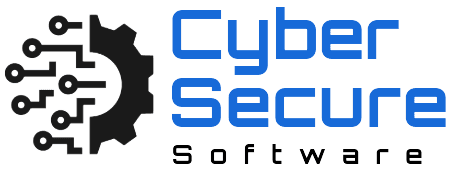Key Questions to Consider When Building Cyber Secure Software Systems for your business
Key Questions to Consider When Building Cyber Secure Software Systems for your business
Welcome to Cyber Secure Software, where we recognize the importance of developing a strong and secure software system for the success of your business. As you begin the process of creating new cyber-secure software, it’s vital to ask the right questions to ensure your system is robust against threats and aligns with your business objectives.
Here are the essential questions you should reflect on:
What Are the Main Goals of the Software?
Before diving into technical aspects, clarify your goals for the new software system. Are you aiming to streamline processes, enhance user experience, or improve data management? Understanding your primary goals will direct the development process and help prioritize security features that align with your business objectives.Who Are the Main Users and What Are Their Requirements?
Identify the users of the software and their specific requirements. Different user roles may necessitate various access levels and security measures. For example, administrative users might require broader access compared to general users. By understanding these requirements, you can create a system that balances functionality with appropriate security measures.What Are the Possible Threats and Weaknesses?
Conduct a risk assessment to pinpoint potential threats and vulnerabilities relevant to your software. Consider factors like data breaches, malware, and insider threats. Understanding these risks will enable you to implement focused security measures and prepare for possible scenarios that could affect your business.What Data Will the Software Manage and How Will It Be Secured?
Determine the types of data your software will handle, including sensitive information such as personal identification details, financial records, or proprietary business information. Employ encryption, access controls, and secure data storage practices to protect this information from unauthorized access and breaches.What Compliance Standards Must the Software Adhere To?
Various industries have specific regulations and standards concerning data security and privacy. Research the applicable compliance requirements, such as GDPR, HIPAA, or PCI-DSS, and ensure your software adheres to these standards. Non-compliance can lead to legal problems and financial penalties, so integrating these requirements into your development process is crucial.How Will You Handle User Authentication and Authorization?
Effective user authentication and authorization are vital for software security. Decide on methods for verifying user identities, such as multi-factor authentication (MFA), and establish role-based access controls to ensure users only have access to the information and functions necessary for their roles.What Is Your Strategy for Regular Updates and Patching?
Cyber threats are constantly evolving, so it’s essential to have a plan for regular software updates and patching. Establish a process for monitoring vulnerabilities, applying patches, and updating software components to address newly identified threats and maintain security.How Will You Monitor and Respond to Security Incidents?
Create a strategy for monitoring your software system for suspicious activities and potential security incidents. Implement logging and alerting mechanisms to identify anomalies. Additionally, develop an incident response plan to address and mitigate any security breaches effectively.What Are the Long-Term Maintenance and Support Strategies?
Consider the ongoing maintenance and support requirements for your software system. Regular maintenance is critical for resolving issues, updating features, and ensuring continued security. Define the scope of support, including response times and responsibilities, to ensure you can address any concerns promptly.How Will You Train and Educate Users on Security Best Practices?
User education is a key aspect of maintaining a secure software environment. Develop training programs to inform users about security best practices, such as recognizing phishing attempts, creating strong passwords, and following secure data handling procedures. Empowering users to act responsibly can significantly lower security risks.What Is Your Budget and Resource Allocation?
Creating and maintaining a secure software system requires financial investment. Evaluate your budget and allocate resources efficiently to cover development, security features, maintenance, and training. Ensure you have the necessary financial and human resources to support the project’s success.How Will the Software Integrate with Existing Systems?
Determine how the new software will fit with your current systems and infrastructure. Smooth integration can minimize operational disruptions and enhance functionality. Ensure the software is compatible with your existing technology stack to avoid compatibility issues and maximize efficiency.
Conclusion
Creating a new cyber-secure software system is a complex yet essential undertaking. By addressing these critical questions, you can ensure your system is not only functional and aligned with your business goals but also resilient against potential threats. At Cyber Secure Software, we are here to assist you at every stage of this process, helping you develop a secure, reliable, and effective software solution tailored to your requirements.
If you have any questions or require further assistance, feel free to reach out to us. Your business’s security is our top priority, and we are committed to helping you achieve a secure and successful software system.
